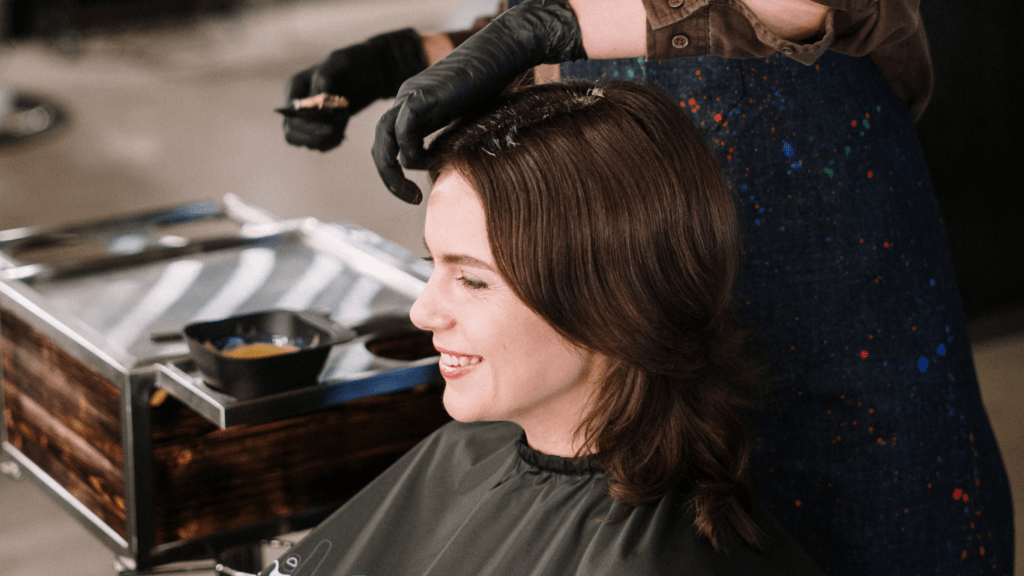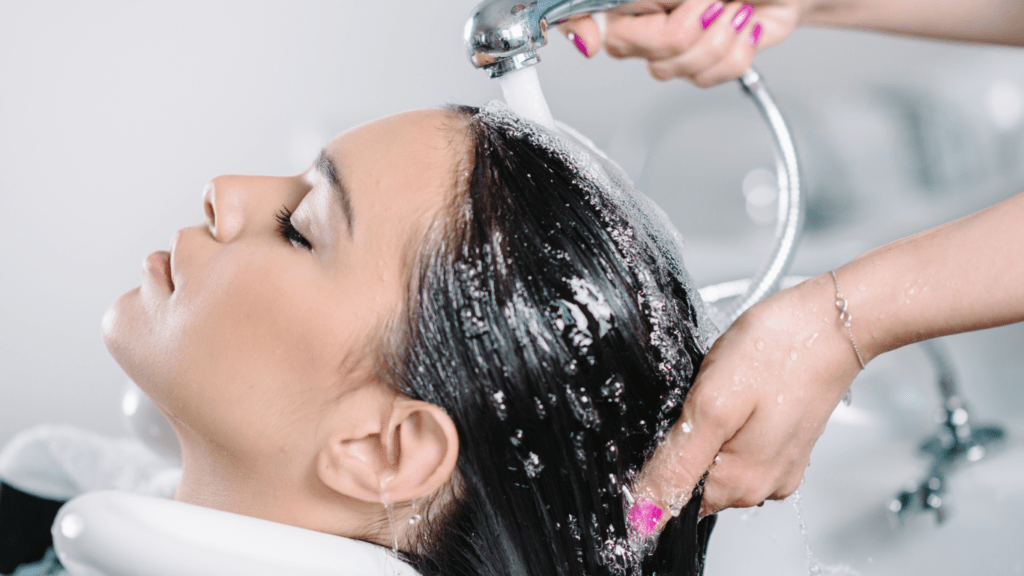Understanding Your Hair Type
Identifying your hair type is essential for effective haircare. Different hair types require specific products and techniques. Generally, hair types fall into four categories: straight, wavy, curly, and coily.
Straight Hair
Straight hair types are smooth and lacks curls. This type often appears shiny since natural oils can easily travel from the scalp to the ends. If I have straight hair, lightweight shampoos and conditioners work best. Avoid heavy products that can weigh hair down.
Wavy Hair
Wavy hair features loose, tousled curls. It ranges from fine to coarse. For wavy hair, I opt for products that enhance natural waves without adding frizz. Lightweight gels and mousses are ideal for defining waves.
Curly Hair
Curly hair forms distinct ringlets. It’s prone to dryness since natural oils struggle to reach the ends. Specialized shampoos free from sulfates and parabens suit curly hair best. I focus on hydrating products like leave-in conditioners and curl creams.
Coily Hair
Coily hair has tight, springy curls. This type is usually dense and dries out quickly. Heavy creams and oils provide the required moisture and definition for coily hair. I prioritize deep conditioning treatments to maintain health and bounce.
Combining Hair Type with Texture
Hair texture can be fine, medium, or coarse. Combining hair type with texture ensures optimal haircare. I choose specific formulas that match both the type and texture. For instance, fine curly hair needs lightweight moisture; coarse curly hair needs a richer formula.
Experimenting for Accuracy
Hair can change due to various factors like hormones, diet, and weather. While I start with the basics, experimenting with products and techniques fine-tunes my routine. Tracking results helps solidify what works best for my hair type.
Essential Haircare Products
Having the right haircare products is crucial for achieving salon-quality hair at home. These products address various hair needs, ensuring optimal results.
Shampoos and Conditioners
Shampoos and conditioners form the foundation of any haircare routine. Select products tailored to your hair type:
- Straight hair: Lightweight, volumizing shampoos and conditioners prevent greasiness and add body.
- Wavy hair: Enhancing products define natural waves without weighing hair down.
- Curly hair: Sulfate-free, hydrating shampoos and conditioners maintain moisture and avoid frizz.
- Coily hair: Rich, nourishing formulas prevent breakage and keep hair deeply moisturized.
Hair Masks and Treatments
Hair masks and treatments provide intense care and repair for various issues. Incorporate these into your routine:
- Damaged hair: Protein-rich masks and treatments strengthen and repair weakened strands.
- Dry hair: Deep conditioning masks offer hydration and restore softness.
- Color-treated hair: Color-safe treatments preserve vibrancy and prevent fading.
- Scalp issues: Scalp treatments address irritation and promote a healthy scalp environment.
Styling Tools and Accessories
Quality styling tools and accessories help achieve professional-looking results. Invest in:
- Hairdryers: Ionic or ceramic hairdryers minimize damage and enhance shine.
- Flat irons: Adjustable-temperature flat irons cater to different hair types, ensuring precise straightening.
- Curling irons: Various barrel sizes allow for creating different curl styles.
- Brushes and combs: Boar bristle brushes distribute natural oils, while wide-tooth combs detangle without causing breakage.
Using these essential haircare products correctly ensures that each strand remains healthy and vibrant, helping you achieve that coveted salon-quality look at home.
Daily Haircare Routine

A daily haircare routine creates the foundation for maintaining salon-quality hair. Consider adopting these expert hacks to keep your hair looking fresh and healthy.
Washing Techniques
Correct washing techniques preserve hair health and extend time between washes. I recommend using lukewarm water, as hot water can strip natural oils, leading to dryness. Focus shampoo on the scalp, massaging it in with fingertips to lift dirt and oils. Rinse thoroughly to remove all product residue. Condition the ends to mid-lengths, avoiding the scalp to prevent greasiness. For coiled or curly hair, consider co-washing with conditioner to maintain moisture.
Proper Drying Methods
Proper drying methods prevent damage and enhance hair’s natural texture. Gently squeeze excess water using a microfiber towel or cotton t-shirt, avoiding vigorous rubbing. For straight or wavy hair, use a blow dryer with a nozzle attachment. Keep it on a medium heat setting to avoid overheating. Curly or coily hair benefits from air drying or using a diffuser. Set the blow dryer to low heat and let curls settle naturally. In all cases, apply a heat protectant spray to shield your hair from heat damage.
Weekly Deep Conditioning Treatments
Weekly deep conditioning treatments help maintain healthy, vibrant hair. Conditioning treatments can restore moisture, strength, and shine, especially for those using heat styling tools or chemical treatments.
Choosing the Right Deep Conditioner
Selecting a deep conditioner suited to your hair type is crucial. For fine hair, use lightweight formulations to avoid weighing it down. Thick, coarse hair benefits from richer, more intensive conditioners. Choose hydrating, emollient-rich products for curly and coily hair to lock in moisture.
Application Techniques
Proper application ensures the conditioner penetrates the hair shaft. Apply the product evenly from the mid-lengths to the ends of damp hair, avoiding the roots to prevent greasiness. Comb through with a wide-tooth comb for even distribution.
Heat Activation
Using heat can enhance the effectiveness of deep conditioning treatments. Cover your conditioned hair with a shower cap and apply a warm towel or use a hooded dryer for 20 minutes. This allows the cuticles to open, improving product absorption.
Rinse and Finish
After conditioning, rinse with cool water to close the cuticles and seal in moisture. For an extra boost, follow with a leave-in conditioner or hair oil. This final step helps maintain the salon-quality look by keeping hair smooth and manageable.
Regular deep conditioning treatments contribute significantly to achieving salon-quality hair at home.
Tips for Reducing Heat Damage
Preventing heat damage is key to achieving healthy, salon-quality hair at home.
Using Heat Protectants
Using heat protectants is essential for reducing heat damage during styling. These products form a protective barrier that minimizes damage caused by hot tools like flat irons, curling wands, and hairdryers. I always select a heat protectant suited to my hair type. For fine hair, I choose a lightweight spray, while thicker hair benefits from a cream or oil-based product. I apply the heat protectant evenly to damp hair before blow-drying and to dry hair before using other hot tools. By consistently using heat protectants, I protect my hair from excessive heat exposure and maintain its health and shine.
Alternative Heatless Styles
Exploring alternative heatless styles helps reduce reliance on hot tools and minimize heat damage. Braiding damp hair at night creates natural waves by morning, while twisting sections and allowing them to air dry forms beautiful curls. I also use hair accessories like rollers or flexi rods to achieve curls without heat. When I switch to heatless styles, my hair experiences less stress, remains healthier, and still looks stylish.
Professional Techniques for Styling at Home
Achieving a salon-worthy style at home is possible with the right techniques and tools. By mastering these methods, you can ensure your hair looks fabulous every day.
Blow Drying Like a Pro
Proper blow-drying can make a significant difference in achieving a polished look. I start by towel-drying my hair with a microfiber towel to reduce frizz and excess moisture. Then I apply a heat protectant to safeguard my strands from the heat. Using a high-quality hairdryer with adjustable heat settings, I begin drying with a lower heat setting before gradually increasing the temperature. I section my hair using clips to ensure even drying and use a round brush to create volume and smoothness. Directing the airflow from roots to ends helps in achieving a sleek finish.
Achieving Perfect Curls and Waves
Creating salon-quality curls and waves requires the right approach. For loose, beachy waves, I use a large-barrel curling iron, winding sections of hair away from my face. For tighter curls, I opt for a smaller barrel size. To ensure a lasting hold, I apply a lightweight mousse before curling. After curling each section, I allow the curls to cool, then gently run my fingers through to loosen them for a natural look. For added volume and texture, I finish with a sea salt spray or a texturizing spray.
Mastering the Sleek Straight Look
When aiming for sleek, straight hair, using a flat iron properly is crucial. I begin by applying a heat protectant to shield my hair from high temperatures. After sectioning my hair, I use a quality flat iron with ceramic plates for even heat distribution. Starting from the roots, I glide the flat iron down each section slowly to ensure straightness in one pass, reducing the need for repeated application. For extra shine, I finish with a smoothing serum or hair oil.
By incorporating these professional techniques, you can easily style your hair at home, achieving the salon-quality look you desire.
Common Haircare Mistakes to Avoid
Achieving salon-quality hair at home involves avoiding common mistakes that can damage hair and hinder efforts.
Overwashing and Overstyling
Overwashing strips hair of its natural oils. Instead, I wash my hair 2-3 times per week. Excessive styling with heat tools leads to dryness and breakage. Limiting heat styling to once or twice a week keeps hair healthy. For styling, I use heatless options like braiding damp hair or using foam rollers. This approach maintains my hair’s natural texture.
Ignoring Scalp Health
Ignoring scalp health can result in dandruff and reduced hair growth. I use a scalp scrub once a week to remove buildup. Massaging the scalp with fingertips increases blood circulation, promoting healthier hair. Incorporating scalp-specific treatments, like tea tree oil or salicylic acid shampoos, addresses issues such as dandruff or oiliness. A healthy scalp forms the foundation for salon-quality hair.



